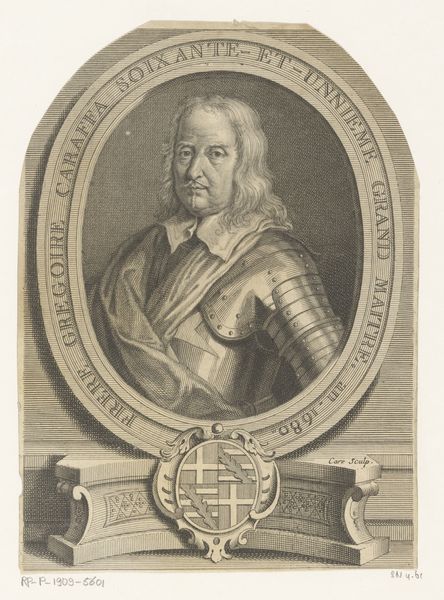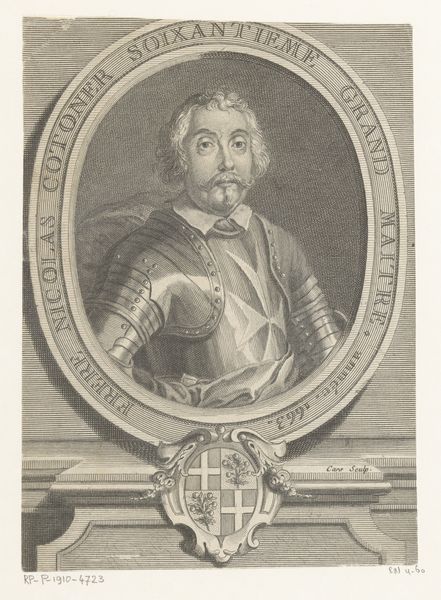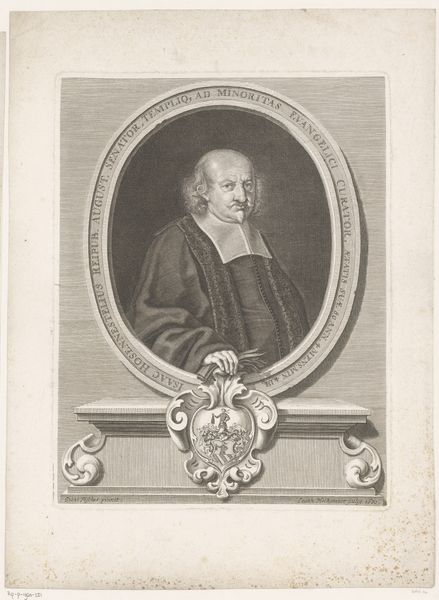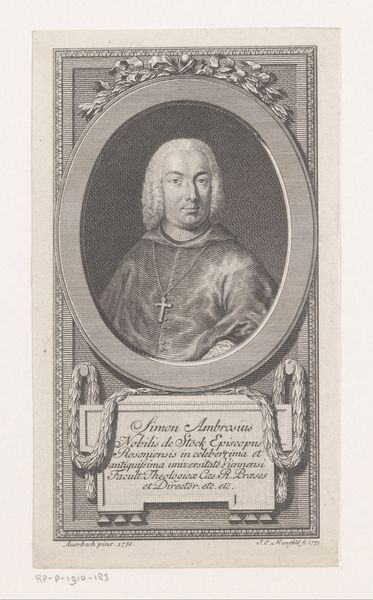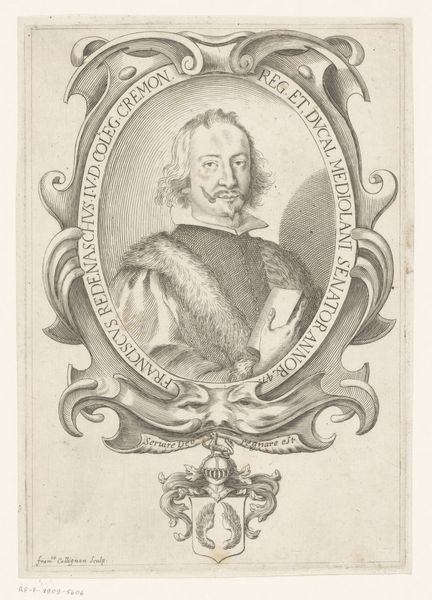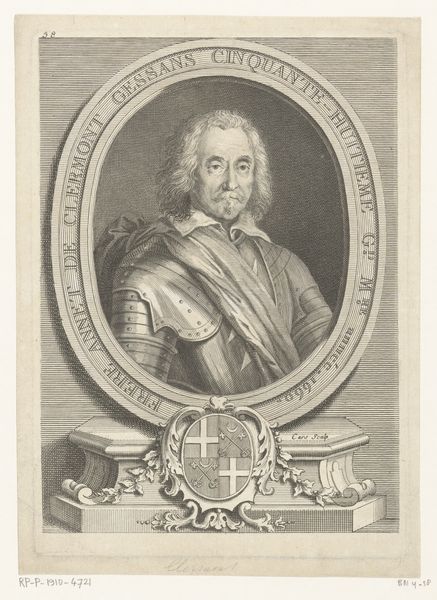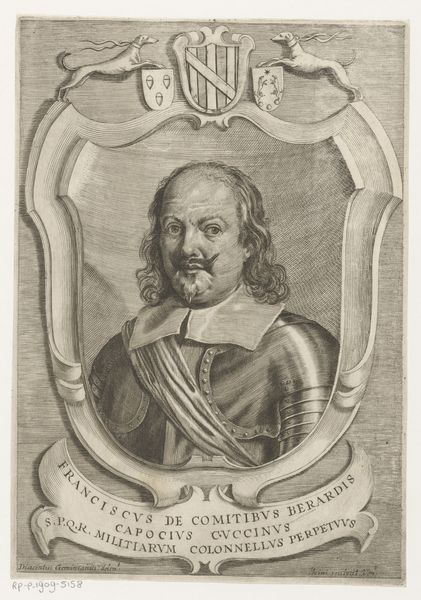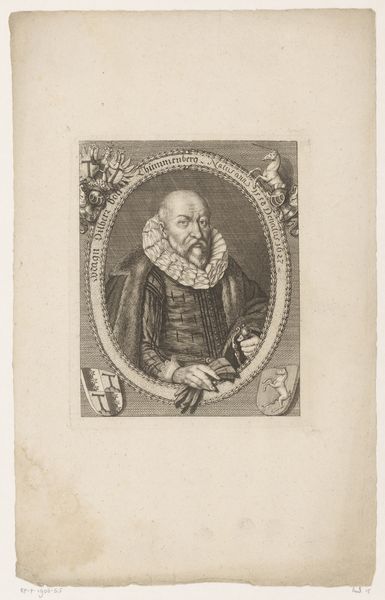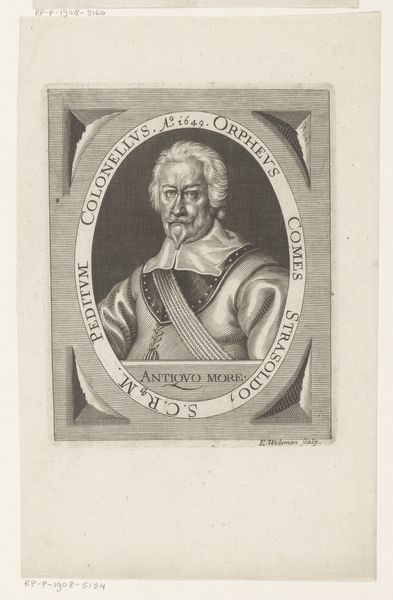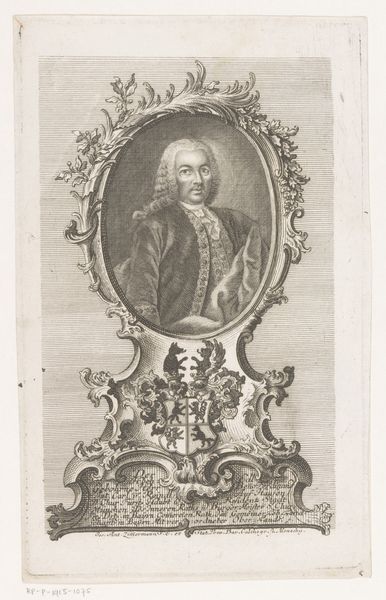
print, engraving
#
portrait
#
baroque
# print
#
old engraving style
#
engraving
Dimensions: height 332 mm, width 208 mm
Copyright: Rijks Museum: Open Domain
Curator: Here we see an engraving entitled “Portret van Emanuel Thesaurus.” The piece dates back to somewhere between 1642 and 1704 and was created by Georges Tasnière. Editor: My first impression is one of solemn dignity, typical of the Baroque. The oval framing, the elaborate ribbons, and, of course, the inscription all work together to elevate the sitter. Curator: It certainly seems that way. Consider Emanuel Thesaurus, pictured here. His attire—specifically the cross—points to a man of significant stature, very likely within religious circles. Editor: That cross is a potent symbol, carrying centuries of spiritual and cultural weight. You also see a family crest beneath his portrait, which gives me insight into Thesaurus' identity—a figure rooted in established societal structures, tradition and legacy. Curator: That's definitely key to the whole image. It reflects the social structures and importance placed on lineage and status. Editor: Absolutely. And look at the Latin inscription at the bottom. "Ingenium maius gignere non poterant"— "a greater talent they could not beget". This reinforces the idea that Emanuel Thesaurus was regarded as the pinnacle of his family’s achievements, doesn’t it? It’s about shaping and controlling how he will be remembered, not only his talent, but also that of his ancestors! Curator: The engraving functions not just as an individual portrait, but also as a statement of dynastic pride, deeply intertwined with religious and societal authority. Editor: Seeing the cultural artifacts surrounding him offers profound insights into Baroque ideals of class, character and accomplishment. Thanks for bringing those socio-political aspects to light! Curator: Likewise, I appreciate you shining light on the work's symbols and imageries, their deeper meaning for audiences in that historical moment—as well as our own.
Comments
No comments
Be the first to comment and join the conversation on the ultimate creative platform.

